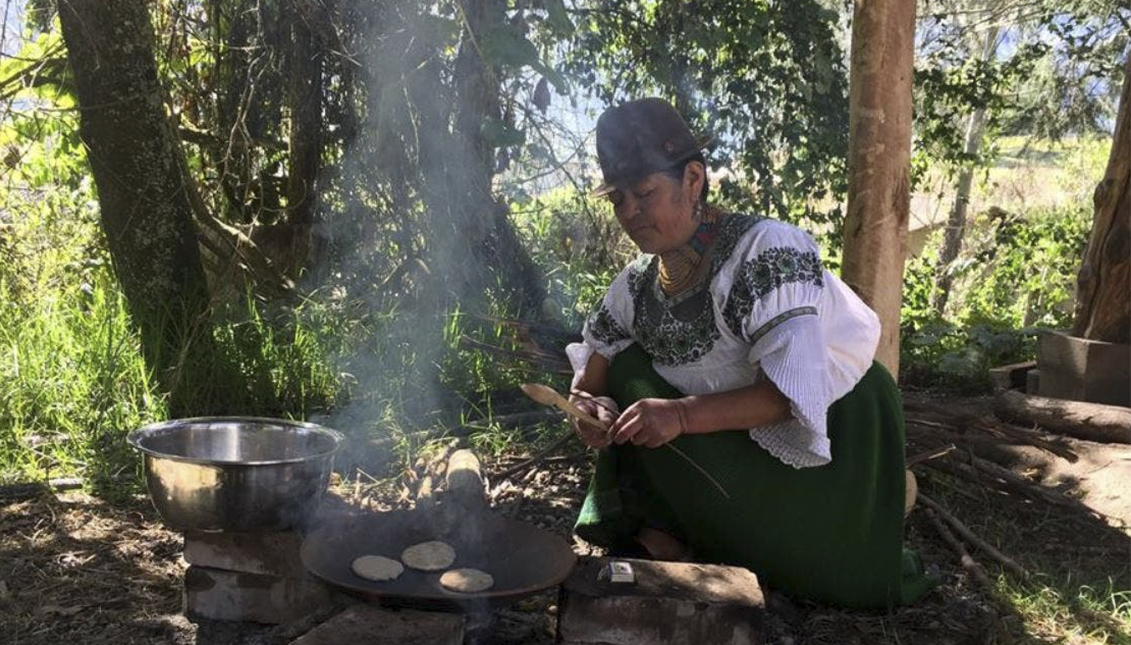
Ancestral cuisine: When volcanoes are the pots of tasty nature
Almost thirty of Ecuador's 98 volcanoes are still active and, under the stones, the children of the fire cook the recipes of chef Pachamama.
In the small community of La Magdalena, in the middle of the hills and valleys of the Province of Imbabura, the Kichwa Caranqui people carefully keep a recipe book as old as the volcanic stone that covers the Andean mountain range. If what is above, is also below, the Kichwa connect the Pachamama with its fruits through a culinary ritual that has been passed on from father to son for generations.
It's an ancient cooking technique that involves burying food so that the burning stones cook it, in a place where lava still flows in underground streams. They call it 'pachamanca.'
"Our Indians discovered that inside the earth, with hot stones, they could cook food much faster than outside in pots," Alexis Criollo, owner of Pondo Wasi — in Kichwa, 'house of the clay pot' — told EFE.
The kitchens of Pondo Wasi are the mere boiling earth, where the flavors of their dishes are mixed thanks to the igneous rocks that were formed by the cooling of the lava and which fill the palate with quasi-earthly hues.
However, it's not as simple as putting a lasagna in the microwave. Ecuadorian Indians must first perform a ritual where they ask permission from the land to cook on it, as well as remove the negativity from the diners.
"From our point of view, nature is a sacred place and we must enter it by performing ceremonies that help us enter the Allpa Mama (mother earth) in harmony," explained Segundo De la Torre, who is in charge of the rituals.
The preparation process includes making a wreath of flowers and offerings of grains, as well as plants such as rue, chilca and nettle, which are used to give positive energy to those who feed themselves, as well as to raise awareness about caring for nature and its elements — air, water, earth and fire — which must be "protected" to avoid "catastrophes," De la Torre said.
RELATED CONTENT
The first step in the pachamanca is to make a hole in the ground where they place the volcanic stones they have previously heated, and then add the chilca leaves. The result, they say, is a type of pressure cooker where they introduce food such as corn or meat.
The cooking takes about three hours and everyone who is going to eat must help in the process.
"It's like a minga (collective work with social purposes, in Kichwa)," said Criollo's mother, María Tambi, who said she prefers to cook this way because "the pots or aluminum are harmful to our health."
Part of the secret of this culinary art is the micronutrients the stones emit and incorporate into the food, they said.
The telluric ovens are very old and were already used in the Neolithic period and in Europe. Today they are still used in regions of Peru, Chile, Argentina or Ecuador, and in the mountains, the native Cayambi people celebrate a festival in honor of the sun, the Capac Raymi, with food that comes from the ground.
"The young indigenous people are no longer interested, even we ourselves as Ecuadorians, we don't care much about knowing about our culture but prefer to go out to other countries," admits the owner of Pondo Wasi, who aims with his business to rescue the customs and traditions so that they are not lost.
"The land gives us food," concluded Criollo. While ancient aromas and flavors emanate from these natural pots, the oldest culinary trick of chef Pachamama.











LEAVE A COMMENT: